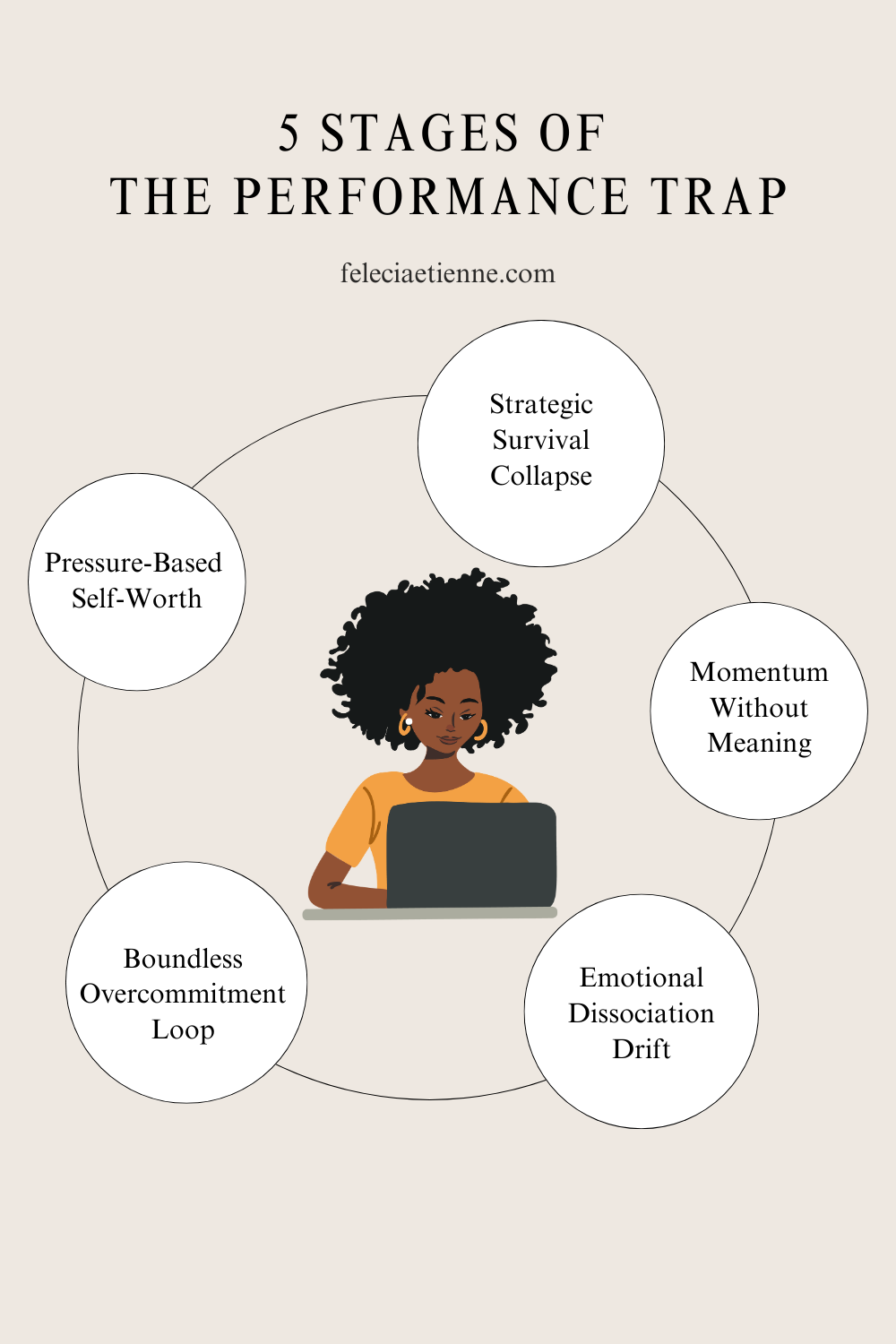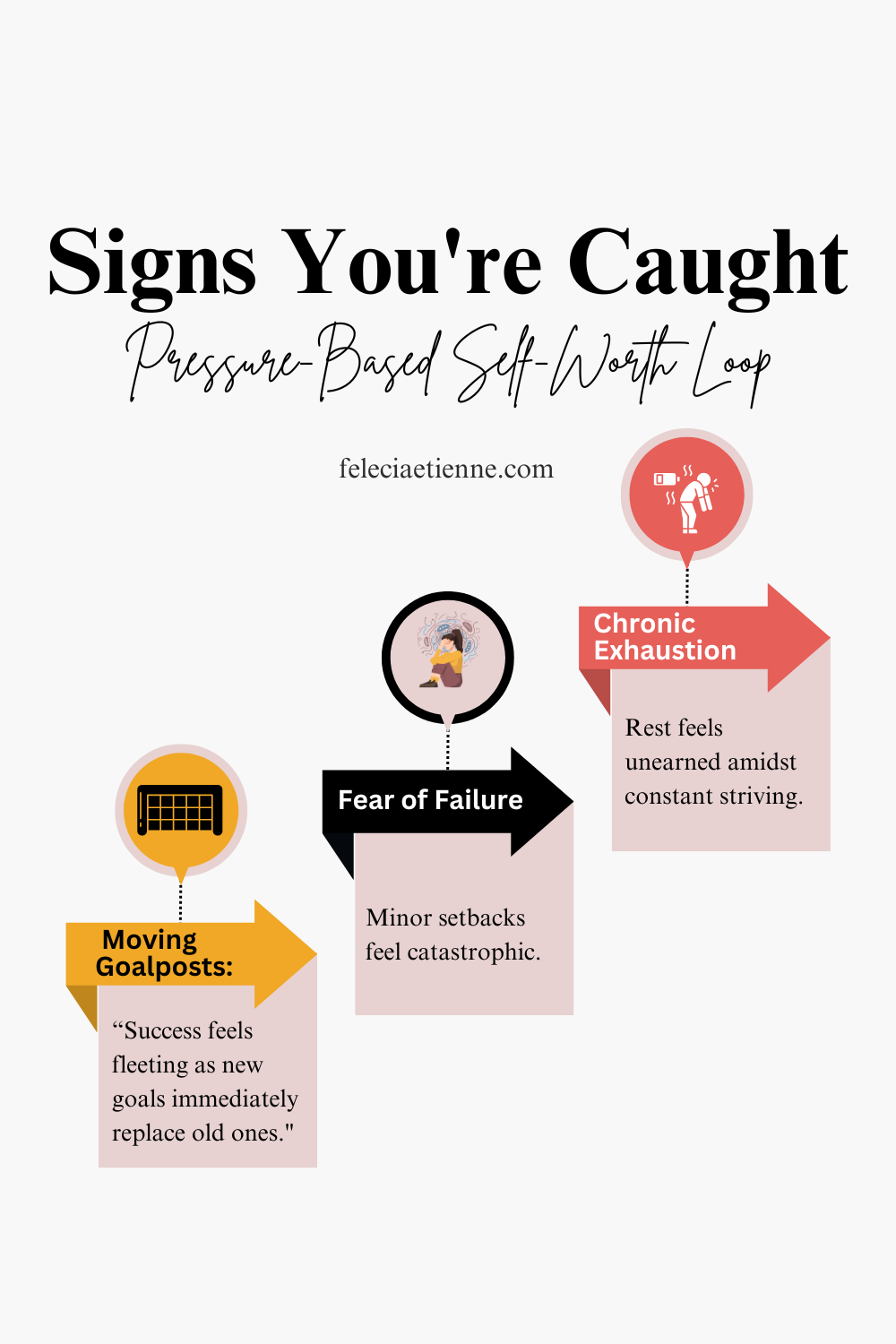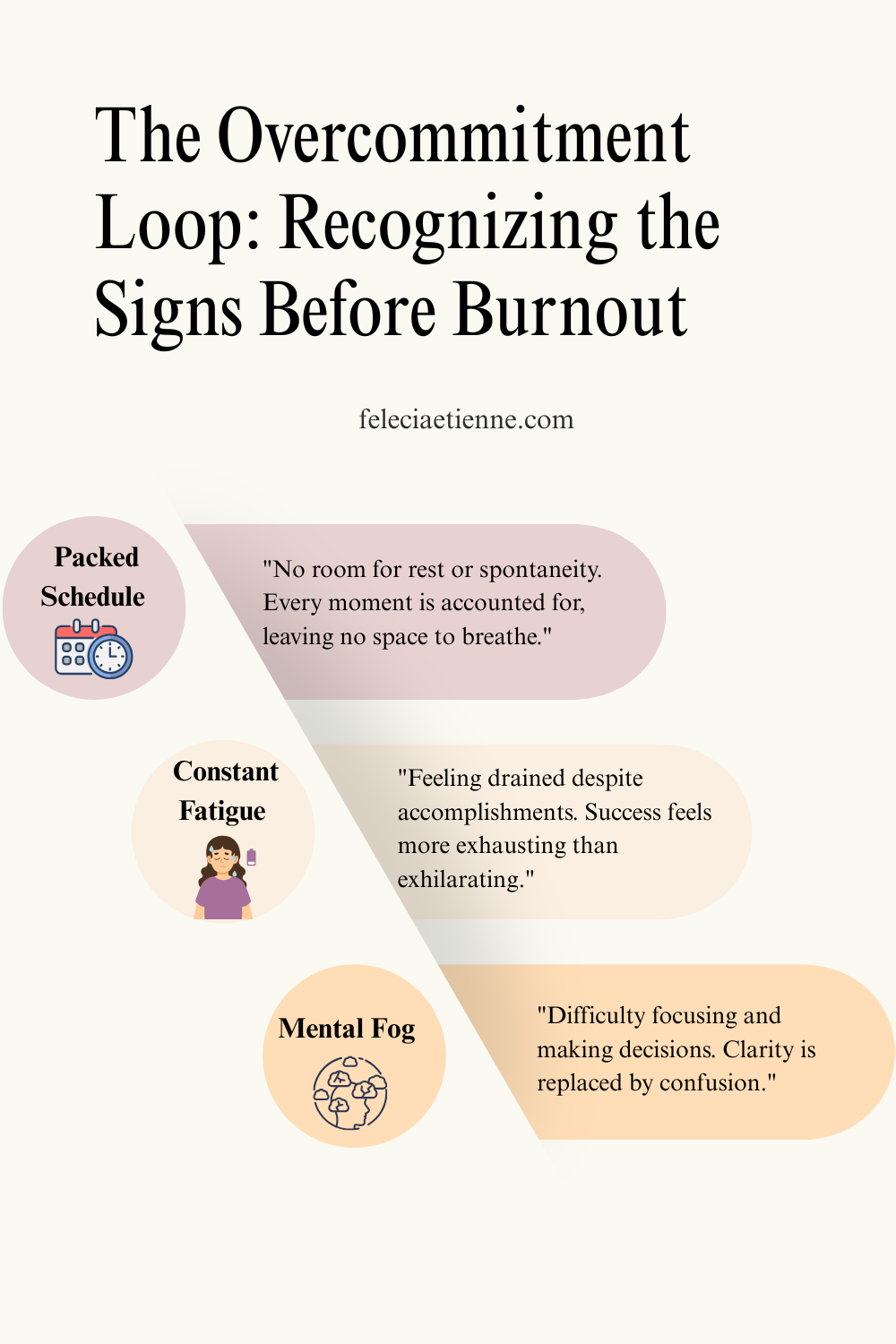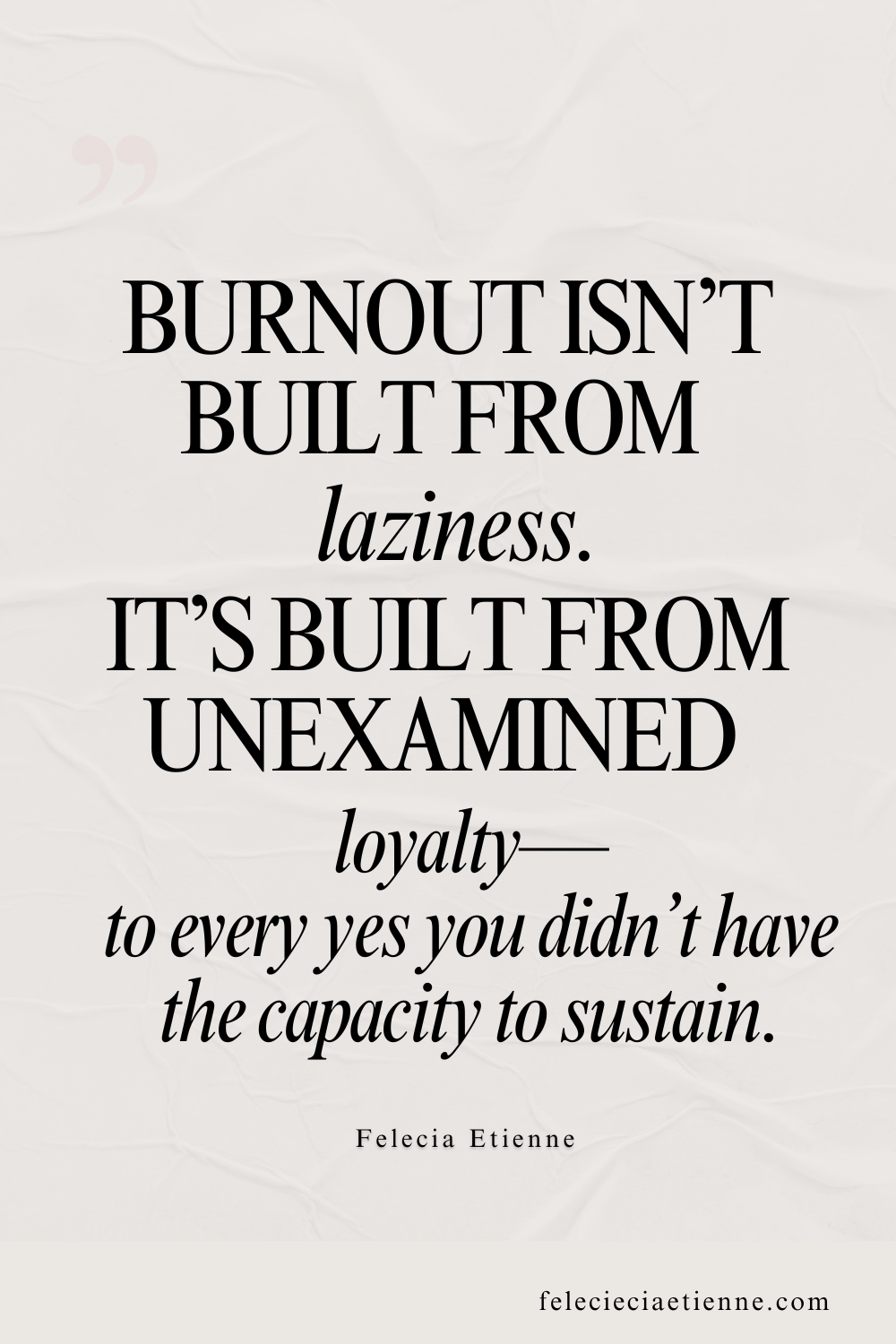The Performance Trap: Why High Achievers Burn Out Even When They’re Doing Everything "Right"
You’re not exhausted because you’re falling short.
You’re exhausted because you’ve been playing by the rules—inside a system that was never designed for real resilience.
You hit the goals.
You built the momentum.
You executed every plan exactly how they said you should.
And somehow... it still feels heavier than it should.
Maybe it’s subtle—the creeping sense that wins don’t hit like they used to.
Maybe it’s louder—the quiet dread that no matter how much you achieve, it’s never enough to feel truly free.
If that sounds familiar, you’re not failing.
You’re stuck inside what I call The Performance Trap—a hidden burnout loop that turns your best effort into quiet self-erasure.
If you're new here—welcome.
If you’re part of this resilient leadership community—you already know: this isn’t where we gloss over the hard conversations.
This is where we get real—and rebuild stronger.
Here’s what we’re unpacking today:
Why traditional leadership rhythms silently erode resilience
How your brain’s stress response gets hijacked without you realizing it
The 5 invisible stages high performers cycle through before burnout breaks through
And most importantly—how to recognize the trap before it takes you down
Because burnout doesn’t happen with a dramatic crash.
It happens through invisible compromises that stack up over time—until survival mode feels like the only mode left.
We’re not here to glorify collapse.
We’re here to interrupt it.
Let’s get into it.
The Hidden Costs of “Doing It All”
“Burnout isn’t a failure of willpower. It’s what happens when you try to lead from a system that rewards exhaustion instead of alignment.”
It doesn’t feel like burnout at first.
It feels like pride.
Responsibility.
Being the one everyone can count on when things get messy.
You stay a little later.
You answer a few more emails before bed.
You take the extra meeting, say yes to the extra client, promise yourself you’ll rest after "this one big thing."
And at first—you can carry it.
Because you’re built for momentum.
Because you’ve done harder things before.
But inside, something starts to shift.
Not all at once—like a crash.
More like a slow leak in the foundation.
You find yourself sighing before checking your calendar.
Feeling a flash of irritation over a small ask from your team.
Wondering why the win that should have felt like a celebration…feels like just another checkbox.
What the science tells us—though most leadership books skip over it—is that chronic overextension rewires your brain.
The prefrontal cortex—the part that manages your decision-making, emotional regulation, and critical thinking—starts to dim under constant stress.
Meanwhile, the amygdala—your internal threat detector—stays on high alert, interpreting every calendar notification, every Slack ping, every request as one more "threat" to manage.
You’re not leading from clarity anymore.
You’re surviving from urgency.
There’s a name for it: amygdala hijack.
It’s when your emotions start running the show—and your ability to make intentional, aligned decisions quietly erodes.
And the longer you stay stuck in it, the harder it gets to access creativity, empathy, vision—the things that actually made you a powerful leader to begin with.
Sometimes it looks like the corporate leader who’s masterminding a multi-million dollar product launch—while biting her tongue at her team because every small decision feels like a mountain.
Or the entrepreneur who crosses six figures…and feels nothing but a quiet, sinking numbness when she refreshes Stripe.
Or the coach who keeps delivering client wins—while secretly wondering how much longer she can fake the energy.
On the outside, everything looks fine.
On the inside?
The foundation is starting to crack.
And it’s not because you're doing anything wrong.
It’s because the human system you’re operating was never designed to run full-throttle without realignment and recovery.
As performance science shows, without strategic recovery, your cognitive capacity shrinks, your emotional resilience tanks, and your brain’s reward system—where motivation lives—stops firing properly.
(Peak Performance, Stulberg & Magness)
Wins stop feeling like wins.
Momentum stops feeling exciting.
And eventually, even rest starts feeling unreachable.
Related article: Why You Can’t Focus (Even When You Know What to Do): The Hidden Role of the Prefrontal Cortex
“You can’t spreadsheet your way out of a nervous system that’s been running on emergency codes for too long.”
The signs creep in quietly:
You second-guess decisions you used to make effortlessly.
You catch yourself snapping at people you genuinely care about.
You feel a low-grade resentment toward the business or career you once loved.
You tell yourself it’s just a "busy season."
That you need to organize better.
Maybe a better planner.
Maybe a tighter morning routine.
But here’s the truth most people won’t say out loud:
No planner can fix a system that’s burning itself out at the foundation.
Operating from The Performance Trap is like trying to build a skyscraper on an earthquake fault line.
No matter how strong the structure looks above ground, the pressure underneath eventually finds the cracks.
And when it does, it doesn’t just cost you momentum.
It costs you the connection to yourself—the vision, the creativity, the joy—that made you unstoppable in the first place.
If you’re starting to feel like your success is costing more than it’s giving—you’re not broken.
You’re running a rhythm your biology wasn’t built to sustain.
And seeing it clearly?
That’s the first step toward building something stronger.
Something sustainable.
Something real.
The 5-Step Cycle of The Performance Trap
“You don’t burn out by being incapable. You burn out by carrying invisible expectations that were never humanly sustainable.”
The Performance Trap doesn't break you overnight.
It reshapes you—quietly, invisibly—until survival feels normal and success feels suspiciously empty.
It always starts the same way:
Not with failure.
Not with laziness.
But with expectations that outgrow your biology's actual capacity.
Leadership culture doesn’t talk about this part.
It celebrates grit.
It celebrates excellence.
It celebrates the ones who "do it all."
But inside high achievers, something more dangerous forms: a silent agreement that your worth is directly proportional to your output.
The more you produce, the more you prove you deserve your seat.
The more you deliver, the more you justify your leadership.
Not because anyone said you had to.
Because somewhere along the way, your nervous system learned that pressure equals safety.
Related article: Essential Self-Care Tips for High Achievers: Transform Your Success with These Must-Have Practices
1. Pressure-Based Self-Worth
You cross milestones—and instead of feeling a rush of pride, you feel a quiet tightening in your chest.
A voice that whispers, "Now you have to maintain it."
You win new business—and immediately start worrying whether you can sustain the momentum.
You celebrate a big launch—and catch yourself calculating how much higher you’ll need to aim next time.
Behavioral science calls this reward prediction collapse:
The brain anticipates a surge of reward from achievement—but when the reward doesn’t land, it triggers a stress response instead.
Dopamine fades.
Cortisol rises.
Your brain learns that achieving isn't safe.
It’s just the opening act for the next round of survival.
The foundation of self-trust begins to crack—quietly.
Not because you’re weak.
Because you’re carrying a definition of success that makes peace impossible.
It doesn’t show up as dramatic breakdowns at first.
It shows up in the way your victories start to feel suspiciously hollow.
In the way small mistakes feel like massive threats.
In the way you keep raising the bar for yourself—until you’re sprinting toward a finish line that keeps disappearing every time you get close.
You’re not chasing dreams anymore.
You’re chasing permission to breathe.
And that permission always stays one accomplishment away.
Related article: Grit Isn’t the Problem. Cortisol Is: How Motivation Dies Under Stress
2. Boundless Overcommitment Loop
It doesn’t happen with one big yes.
It happens with a thousand small ones.
The "I can fit it in."
The "It’ll only take a minute."
The "I’ll rest after this."
And every time, you mean it.
Every time, you believe you’re stretching just a little—nothing you can’t handle.
Until the stretch becomes the standard.
And your nervous system forgets what “rested” ever felt like.
There’s a particular look high performers get right before burnout catches up to them.
Not frantic.
Not chaotic.
Silent urgency.
A calendar packed with non-negotiables.
An inbox filled with deliverables.
A mind spinning backup plans for things that haven’t even gone wrong yet.
From the outside, you look organized.
Driven.
Exactly the kind of leader every team wants.
But inside, you know something’s shifting.
Your mind feels heavier.
Your reactions are quicker.
Your joy is thinner.
Neuroscience shows that chronic overcommitment keeps the brain locked in sympathetic dominance—a subtle but constant fight-or-flight state. Your executive functions—the ability to prioritize, to imagine, to innovate—start running on fumes.
And here's what no one tells you:
You don’t notice the overfunctioning while it’s happening.
You only notice the exhaustion afterward—when the adrenaline wears off and all that’s left is depletion.
The mental fitness battery that used to last you weeks now barely stretches over days.
The clarity that once felt automatic now feels like a luxury you have to fight for.
I've seen this moment up close more times than I can count.
High-achieving leaders, sitting across from me, their calendars color-coded to perfection—yet their faces tell a different story.
The micro-pauses before answering simple questions.
The quick flicker of hesitation when asked what they actually want next.
The exhaustion hidden behind the practiced smiles.
You can’t "optimize" your way out of this loop.
You can’t "time-block" your way out either.
Because the Boundless Overcommitment Loop doesn’t just steal your time.
It steals your capacity to discern what actually matters.
Related article: Feeling Burnt Out Despite Doing Everything Right? It’s Not Your Strategy—It’s Your Nervous System
“Burnout isn’t built from laziness. It’s built from unexamined loyalty—to every yes you didn’t have the capacity to sustain.”
There’s no shame in how it happens.
Only truth in what it costs.
The erosion is slow, but precise:
One boundary blurred.
One signal ignored.
One gut instinct overwritten by "should."
Until all the yeses you said to build your dream start feeling like invisible obligations chaining you to a rhythm you didn’t choose.
3. Emotional Dissociation Drift
There’s a moment high performers rarely talk about.
Not the sprint.
Not the collapse.
The drift.
That slow, almost imperceptible slide away from your own emotional signals.
It doesn't happen because you stop caring.
It happens because caring feels... dangerous.
When you’re running on overcommitment, your nervous system starts making executive decisions without your permission:
Protect energy.
Minimize emotional load.
Numb anything that feels too costly to process.
At first, it’s small.
You minimize the tension in your gut after a draining meeting.
You push aside the frustration bubbling after another last-minute "urgent" request.
You swallow the resentment rising when you realize you’re once again the default problem-solver, even for things that were never yours to fix.
It’s subtle.
You don't even recognize it as self-protection.
You just think you're "handling it."
Neuroscience shows that chronic stress erodes the brain’s emotional regulation systems—the prefrontal cortex loses efficiency, while the amygdala strengthens threat detection pathways.
Translation?
Your brain learns to feel faster, heavier, and less precisely.
You start categorizing everything as threat or tolerable.
There’s no room left for nuance, joy, or even clear discernment.
It’s not emotional intelligence that's failing.
It’s emotional capacity that's been compromised.
“Living inside Emotional Disassociation Drift is like steering a ship by memory through fog. You can’t see the dangers — you just keep moving, hoping you’re still on course, even as you quietly lose your bearings.”
When emotional drift sets in, it doesn’t look like collapse.
It looks like:
Executing flawlessly—and feeling nothing afterward.
Smiling at the award ceremony—while a hollow ache grows in your chest.
Delivering the keynote—then wondering why it felt like it was happening to someone else.
The danger isn’t that you stop leading.
It’s that you keep leading… disembodied from the vision that once pulled you forward.
I’ve sat across from leaders caught in this drift.
You can see it in the micro-pauses.
The flicker of hesitation before answering a question about what lights them up.
The way a conversation about future goals trails off into polite deflection.
Their calendars are full.
Their teams are thriving.
And yet inside, the pilot light is barely flickering.
Related article: 11 Toxic Myths Sabotaging Your Performance and Productivity
“Burnout doesn’t always roar through the door. Sometimes it slips in quietly—on the back of every time you said ‘I’m fine’ when you weren’t.”
The longer emotional disassociation continues, the more misaligned momentum builds:
More wins that don’t feel like victories.
More milestones that don’t feel like movement.
More motion without meaning.
And because it happens so slowly, so silently, high performers rarely recognize the true cost until it feels irreversible:
The moment you realize you can no longer hear your own intuition clearly—only the next demand.
But here’s the truth:
You were never meant to build legacy from emotional depletion.
You were meant to build it from aligned energy—the kind that can only be accessed when you’re fully home inside yourself again.
4. Momentum Without Meaning
By the time emotional drift has taken hold, you're still moving.
You're still checking the boxes, hitting the goals, making the moves.
But it doesn't feel like leadership anymore.
It feels like momentum... without meaning.
The meetings happen.
The launches happen.
The milestones get crossed.
And every achievement feels like crossing an invisible finish line only to find another starting gate immediately behind it.
Peak performance science explains it like this:
When the brain's reward circuitry—dopamine release, executive reinforcement—repeatedly misfires under misalignment, it stops associating achievement with fulfillment.
Instead, achievement becomes maintenance.
Pressure becomes the baseline operating system.
In short?
You're not building.
You're surviving forward.
“Momentum without meaning is like running on a treadmill pointed toward a finish line that keeps moving backward every time you sprint harder.”
You tell yourself:
"It’s just this season."
"It'll feel better after the next launch, the next hire, the next goal."
But deep down, you know the season never ends.
And here's what makes this phase so hard to spot:
The outside world keeps congratulating you.
They see the metrics.
The promotions.
The podcasts.
The accolades.
They see the version of you that’s still producing.
They can’t see the version of you that’s quietly disappearing.
I've lived this rhythm, too.
The late nights in hotel rooms after standing on stages, closing deals, delivering results—and wondering why it all felt so hollow.
The silent questioning:
"Why doesn’t this feel like success?"
"Why am I the most exhausted when I should feel the most accomplished?"
It’s disorienting to realize that what the world calls winning can still feel like losing inside your own body.
And it’s easy to internalize that confusion as a flaw—when really, it’s just a system running past its true capacity.
You’re not weak for feeling it.
You’re awake for noticing it.
I’ve also sat across from leaders—brilliant, driven, heart-led—who’ve hit the same invisible wall.
Who crushed the numbers.
Who earned the titles.
And who quietly wondered if maybe something inside them was broken because none of it felt like it was supposed to.
But it’s not brokenness.
It’s misalignment.
Success built inside a survival rhythm never feels safe.
It only ever feels… heavier.
You still show up for the meetings.
You still crush the presentations.
You still hit the sales goals.
But inside, a different story is playing out:
Hesitation where there used to be fire
Numbness where there used to be vision
Duty where there used to be devotion
Related article: OWNING YOUR IDENTITY: BREAKING FREE FROM EMOTIONAL SHACKLES AND UNLOCK YOUR TRUE POTENTIAL
“High performers don’t burn out because they move too slowly. They burn out because they keep moving in rhythms that betray their real capacity—and no amount of discipline can override biology for long.”
Momentum is beautiful when it’s aligned.
Momentum is devastating when it’s not.
The longer you run in misalignment, the harder it becomes to even imagine what intentional leadership feels like anymore.
Until eventually—your body, your mind, your spirit—start asking the only question that matters:
"At what cost?"
And if that question keeps getting ignored, the system does what it was biologically designed to do:
Protect itself.
Which leads to the final stage of the Performance Trap™: Strategic Survival Collapse™.
5. Strategic Survival Collapse
Collapse doesn’t always look like burnout memes.
It doesn't always look like someone curled up on the bathroom floor or ghosting their responsibilities overnight.
Sometimes, collapse looks like getting quieter.
Narrower.
Less vivid.
It looks like disappearing behind competence.
It looks like functioning from obligation instead of ownership.
You’re still delivering.
You’re still moving.
But the leadership has drained out of it.
Only survival remains.
Behavioral neuroscience shows that under chronic misalignment and stress, the prefrontal cortex—your center for strategy, future thinking, discernment—begins to lose functional access.
You move into executive dysfunction:
Difficulty prioritizing.
Difficulty regulating energy.
Difficulty accessing intrinsic motivation.
Meanwhile, the amygdala—the threat detection system—drives decision-making from urgency, reactivity, and protection.
This isn’t weakness.
It’s biology.
Your nervous system, pushed past its sustainable threshold, activates its final fallback protocol:
Shut down non-essential systems to preserve the core.
“Strategic Survival Collapse™ doesn’t mean you stop moving.It means you stop moving with vision—and start moving purely to protect what’s left of you.”
Sometimes, it shows up as procrastination.
Not because you’re lazy—but because your nervous system can’t tolerate another cycle of effort without recovery.
Sometimes, it shows up as emotional volatility over small things—because your brain literally can’t regulate sensory overload anymore.
Sometimes, it shows up as numbing out from the very work you used to love—because creativity requires safety, and safety feels miles away.
I’ve seen leaders fight this phase with everything they have.
They double down on discipline.
They tighten their routines.
They silence the warning signs.
And sometimes, they succeed—for a while.
Until one day, they wake up and realize they’ve become a brilliant executor of a life that no longer belongs to them.
It’s a brutal recognition.
And it’s one most people never talk about out loud—because it sounds ungrateful.
Because it sounds like failure.
But it’s not failure.
It’s the inevitable result of building success without safeguarding the internal systems success depends on:
Energy.
Clarity.
Ownership.
The real collapse isn’t external.
It’s the quiet loss of alignment inside the leader themselves.
“When survival becomes the strategy, clarity becomes the casualty.”
But here's what matters most:
Collapse isn’t the end.
It’s the call to rebuild.
It’s the nervous system’s way of saying: "This model isn’t sustainable. It's time for a new one."
One built not from exhaustion, but from energy.
Not from pressure, but from presence.
Not from survival, but from strategic realignment.
Which is exactly what we’ll begin to map next.
Where most people stop is exactly where real leadership begins.
You don’t need another productivity system.
You don’t need another motivational quote.
You don’t need to force yourself into another survival cycle disguised as success.
You need a rhythm that reflects your real energy—
A leadership system that honors both your ambition and your alignment—
A way to move forward that builds you, instead of bleeding you dry.
And that’s where the Realignment Cycle™ begins.
If The Performance Trap™ felt familiar, know this:
It’s not the end of your story.
It’s the invitation to build a new one—one where success feels as good on the inside as it looks on the outside.
In the next breakdown, I’ll walk you through exactly how high performers reset, rebuild, and reclaim their leadership without burning out again.
Related article: Procrastination Liberation: 10 Science-Backed Strategies to Crush Perfectionism and Boost Productivity! (Who doesn't want to beat procrastination?)
👉 Read Part 2: The Realignment Cycle™ — How High Performers Reclaim Sustainable Success
Because survival isn't your destiny.
Realignment is your legacy.
Common Questions About The Performance Trap
What are the early warning signs of burnout in high achievers?
It starts small:
Sighing before opening your calendar.
Celebrating wins... and feeling nothing.
Snapping over things that once rolled off your back.
Feeling like your momentum is mechanical, not magnetic.
If you notice more dread than drive, it's not weakness—it's your nervous system asking for realignment.
Why do successful people still experience burnout—even when they love what they do?
Because passion doesn’t protect you from capacity limits.
Loving your work doesn’t mean you can run without rhythm or recovery.
When you build success on survival mode, even the dream job can feel like a burden.
What is The Performance Trap™?
The Performance Trap™ is a hidden burnout cycle where your best effort becomes chronic overextension.
You don't burn out from failure.
You burn out by succeeding inside a system that rewards depletion instead of alignment.
How can I recognize if I’m operating from survival leadership patterns?
You know you're leading from survival when:
Success stops feeling joyful.
Progress feels frantic instead of fulfilling.
Discipline feels like force, not flow.
Wins start feeling like obligations, not celebrations.
It's not a flaw. It's a signal.
And signals are invitations—not indictments.
Related article: Executive Dysfunction Isn’t a Personality Flaw—It’s a Sign of Burnout
Why isn’t discipline enough to prevent burnout?
Because discipline burns glucose and executive function.
Because your brain isn't a machine.
Because no amount of bulletproof planning can fix a leadership rhythm that's out of alignment with your actual biology.
Discipline helps—but without recovery and recalibration, it eventually collapses.
What happens to your brain during chronic stress and overperformance?
Chronic stress shrinks the prefrontal cortex (where strategy and vision live) and strengthens the amygdala (where threat response lives). The longer you stay in overperformance mode, the more your brain prioritizes survival over creativity, discernment, and joy.
You don’t just feel burnt out—you literally lose access to your best leadership capacities.
The Resilient C.E.O. Blueprint: Lead with Confidence, No Matter What
What’s inside?
- Cut through the noise: Identify what truly drives progress, so you can focus on what matters most without wasting energy.
- Protect your energy: Master strategies to set boundaries and manage your time, ensuring success doesn’t come at the expense of your well-being.
- Pivot with purpose: Gain actionable tools to adapt and stay focused, even when faced with unexpected challenges.
This is more than a framework—it’s a proven system designed for leaders across industries to rise above the pressure, overcome obstacles, and emerge stronger. Whether you’re a doctor, lawyer, entrepreneur, or executive, the Resilient CEO Blueprint is your guide to thriving in the face of uncertainty.
Ready to lead with clarity and resilience? Grab your copy of the [Resilient CEO Blueprint] today. It’s time to take the next step forward with confidence.
P.S. If you're looking for deeper support as you navigate this transformative journey, here are two ways I can help:
Master Your Mindset: I specialize in helping high achievers, business owners, and professionals break into the top 1% of their field by mastering their mindset and boosting their performance. When you're ready to take your success to the next level, DM me the word "Edge," and let's start that conversation.
Free Resource for Change: Don’t let negative emotions hold you back! Grab my Self-Sabotage Solution Checklist—a free tool designed to help you identify and release the limiting beliefs that no longer serve you. Take the first step toward a more empowered you today!
Embrace this opportunity to shift from burnout to brilliance. Your path to sustainable success starts now!
Ready to achieve your dream life? I’m Felecia Etienne, your go-to Certified High-Performance Coach™ and Mental Fitness Coach. Let me take you on a transformative journey with a Complimentary Unlock Your Performance EDGE call. This isn’t just a chat—it’s your ticket to the high-performance tools and techniques I’ve shared with my coaching clients.
In this personalized call, you'll:
- Dive into your dreams and goals, tackle obstacles, and bridge the gap between where you are and where you want to be.
- Uncover and combat triggers of self-sabotage while discovering untapped strengths.
- You'll walk away with actionable strategies that deliver immediate impact
Equip yourself with the strategies, resources, and support needed to shatter obstacles, self-sabotaging, narrow the gap, and transform your ambitions into tangible achievements. Ready to escape inertia and boost your impact? Book a private and confidential session. Unlock Your Performance EDGE with Felecia. Let's unlock your potential together.
To find out more about Felecia, you can visit her website at feleciaetienne.com.
Social Media Handles:















